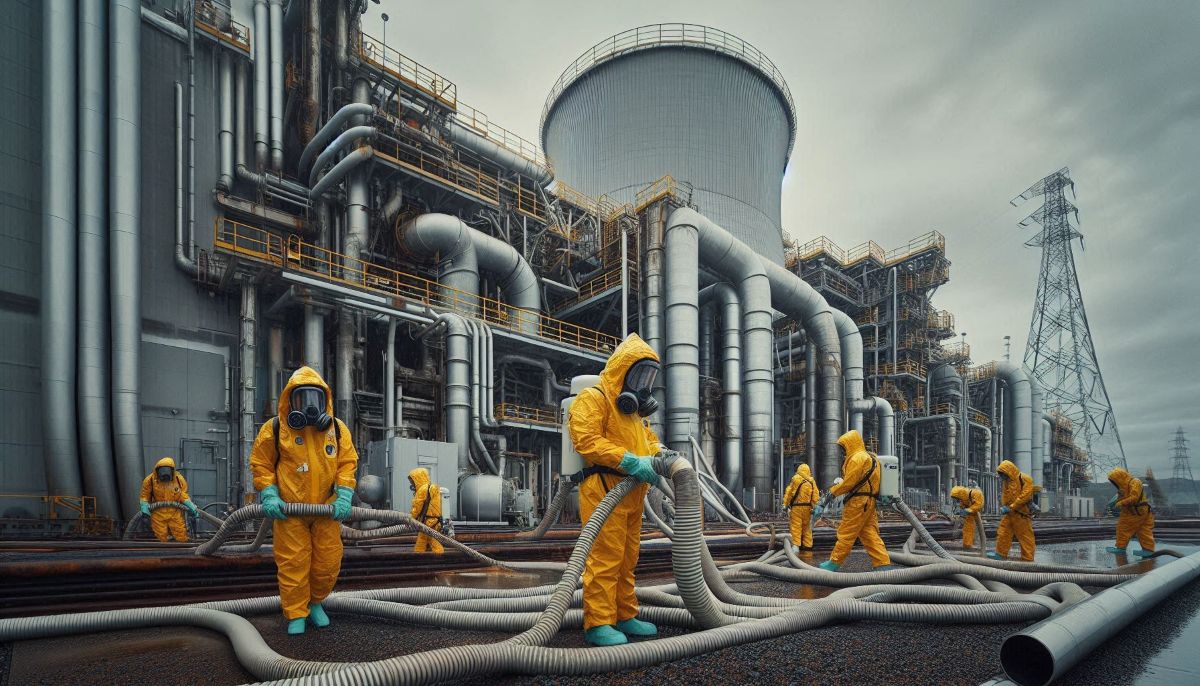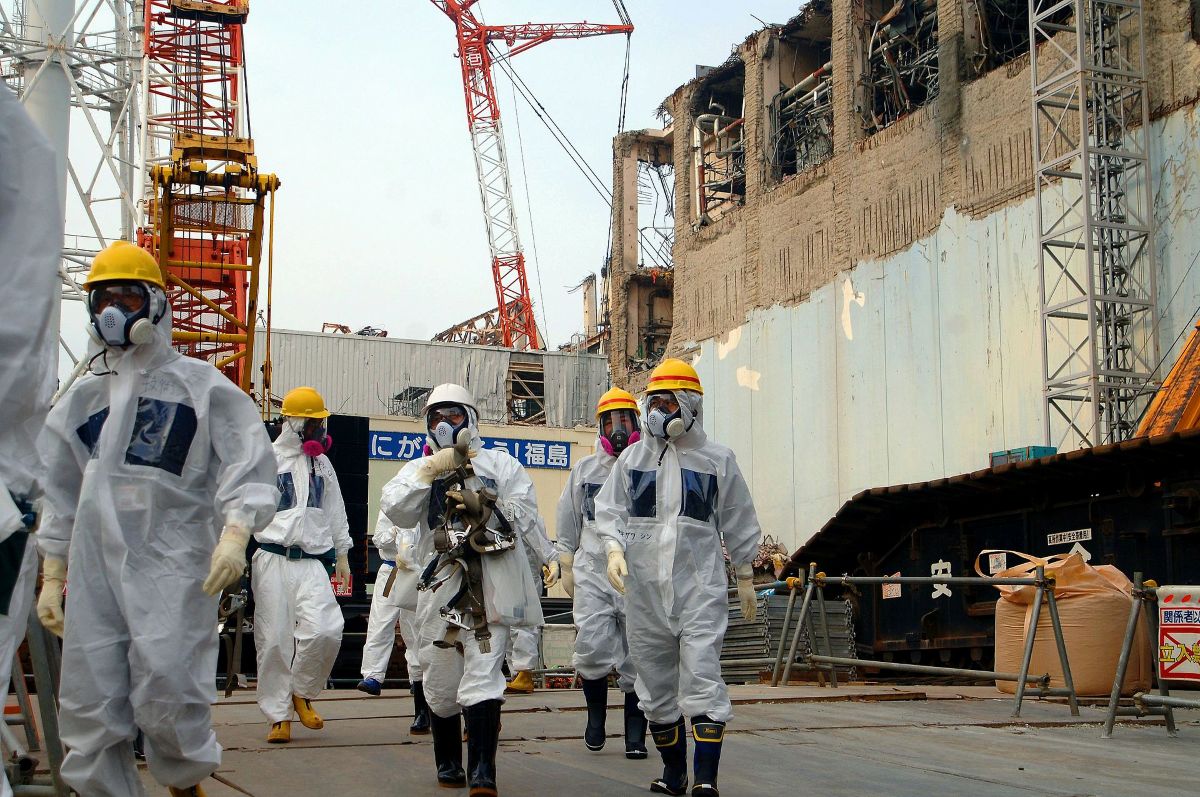
Watch short for this article (5 slides)
Echoes of Disaster: Understanding the Deep and Lasting Impacts of the Fukushima Daiichi Nuclear Accident
The earthquake and subsequent tsunami that struck Japan on March 11, 2011, triggered a catastrophic sequence of events at the Fukushima Daiichi Nuclear Power Plant, leading to meltdowns in three reactors and significant radioactive releases. This event stands as the most severe nuclear accident since Chernobyl, leaving an indelible mark on the environment, public health, and society. While immediate emergency responses aimed to contain the disaster, the long-term consequences continue to reverberate over a decade later, presenting complex challenges in environmental remediation, health monitoring, and socio-economic recovery. This article delves into the profound and persistent impacts of the Fukushima radioactive leaks, examining the scientific understanding of contamination, effects on ecosystems and human populations, the immense scale of ongoing cleanup efforts, and the global lessons learned.

The Radioactive Plume: Understanding the Released Contaminants
The explosions and venting at the damaged reactors released a complex mixture of radioactive isotopes into the atmosphere and, subsequently, massive amounts of contaminated water into the Pacific Ocean. Among the most significant releases were:
- Iodine-131 (I-131): With a short half-life of about 8 days, I-131 posed a significant immediate health risk, particularly to the thyroid gland, which readily absorbs iodine. Its rapid decay means it is no longer a major contributor to environmental radiation levels.
- Cesium-137 (Cs-137): A major long-term concern due to its relatively long half-life of approximately 30 years. Cesium behaves chemically similarly to potassium, allowing it to be readily taken up by plants and animals, entering the food chain. It emits gamma radiation and persists widely in the environment, particularly in soils.
- Cesium-134 (Cs-134): Released alongside Cs-137, Cs-134 has a shorter half-life (about 2 years). Its initial presence helped researchers trace the origin of the contamination specifically to Fukushima.
- Strontium-90 (Sr-90): With a half-life of about 29 years, Sr-90 is chemically similar to calcium and tends to accumulate in bones. It poses a significant internal exposure risk if ingested.
- Tritium (H-3): A radioactive isotope of hydrogen with a half-life of about 12.3 years. Present in large quantities in the cooling water and accumulated contaminated water, tritium primarily exists as tritiated water (HTO), which is chemically identical to regular water (H₂O), making it extremely difficult and costly to separate from large volumes of water.
- Other radionuclides like Plutonium isotopes were also released, but in much smaller quantities compared to Cesium and Iodine.
The initial atmospheric releases contaminated vast swaths of land, primarily northwest of the plant, leading to the establishment of extensive evacuation and restricted zones.
Environmental Footprint: Land and Water Contamination

The environmental consequences have been profound and geographically widespread, requiring unprecedented remediation efforts.
Terrestrial Contamination: Soils and Forests
Vast quantities of radionuclides, particularly Cs-137, were deposited onto soil, vegetation, and buildings.
- Soil Contamination: Cs-137 binds strongly to clay particles in soil, particularly in the top few centimeters. This persistence necessitates large-scale decontamination efforts, primarily involving the physical removal and bagging of contaminated topsoil from residential areas, farmland, and public spaces within designated zones. Millions of cubic meters of contaminated soil and waste are now stored in interim facilities, posing a significant long-term management challenge. (Ministry of the Environment, Japan - Off-site Decontamination)
- Forest Ecosystems: Forests cover roughly 70% of the contaminated land area. Decontaminating these complex ecosystems is largely impractical. Cs-137 cycles within the forest environment, moving from leaf litter to soil, uptake by trees and fungi, and back to leaf litter. This acts as a long-term reservoir of radioactivity, potentially leading to recontamination of downstream areas via runoff and dispersal of organic matter. Monitoring wildlife (e.g., wild boar, bears, mushrooms) in these areas reveals ongoing contamination.
- Agriculture: Significant efforts have been made to reduce radioactive uptake in crops through soil management (e.g., potassium fertilization to compete with cesium uptake) and stringent food monitoring. While levels in most produce now meet strict safety standards, consumer confidence remains a challenge.
Aquatic Contamination: Rivers, Groundwater, and the Pacific Ocean
Water pathways have been crucial vectors for radioactive dispersal.
- Initial Ocean Discharge: In the weeks following the accident, vast amounts of highly contaminated water used for emergency cooling were directly released or leaked into the Pacific Ocean, representing the largest accidental marine release of radioactivity in history.
- Ongoing Groundwater Ingress: Groundwater flowing down from surrounding hills continuously enters the damaged reactor and turbine buildings, becoming contaminated. This necessitates pumping and storing enormous volumes of water.
- ALPS-Treated Water Discharge: To manage the ever-increasing volume of stored contaminated water (over 1.3 million cubic meters as of early 2024), TEPCO and the Japanese government began a controlled, gradual release of treated water into the Pacific Ocean in August 2023. The water undergoes treatment via the Advanced Liquid Processing System (ALPS), which removes most radionuclides to levels below regulatory standards, **except for tritium**.
The decision to release ALPS-treated water, while deemed safe by the International Atomic Energy Agency (IAEA) based on international standards and minimal expected radiological impact, remains highly controversial. Concerns persist among local fishing communities, neighboring countries, and environmental groups regarding potential long-term ecosystem effects of tritium and any residual radionuclides, as well as reputational damage to Japanese seafood.
- Marine Ecosystem Impact: Monitoring has shown elevated levels of radionuclides, particularly Cs-137, in marine sediments and biota near the plant, although levels have generally decreased over time due to dilution, decay, and dispersal by ocean currents. Traces of Fukushima-derived radionuclides have been detected far across the Pacific. Concerns remain about potential long-term bioaccumulation in marine food webs, although concentrations in most commercially harvested fish far from the plant are below regulatory limits. The quote from Dr. Ken Buesseler of the Woods Hole Oceanographic Institution highlights the far-reaching nature of the dispersal (WHOI - Fukushima Radiation FAQs).
Human Health: Assessing the Complex Impacts

Evaluating the health consequences of the Fukushima disaster is complex, involving direct radiation effects, challenges in low-dose epidemiology, and significant psychological impacts.
- Acute Radiation Effects: Unlike Chernobyl, there were no documented deaths or cases of acute radiation sickness directly attributed to radiation exposure from Fukushima among workers or the public, largely due to prompt evacuation and protective measures.
- Thyroid Cancer Screening: Extensive thyroid ultrasound screening programs were implemented for children and adolescents (under 18 at the time of the accident) in Fukushima Prefecture. These programs detected a higher number of thyroid cancers than typically expected. However, attributing this increase directly to radiation exposure remains scientifically debated.
- The United Nations Scientific Committee on the Effects of Atomic Radiation (UNSCEAR) concluded in its 2020 report that the observed increase is likely due to the "screening effect" – intensive screening uncovering prevalent, non-lethal cancers that would otherwise have gone undetected for years, if ever. They assess the radiation doses received by the public were generally too low to cause discernible increases in cancer incidence in the future.
- Some researchers and advocacy groups maintain that a radiation effect cannot be entirely ruled out, emphasizing the need for continued monitoring and research.
- Long-Term Cancer Risk Estimates: Based on estimated radiation doses, UNSCEAR and the World Health Organization (WHO) project that any future increase in overall cancer incidence among the exposed population is likely to be statistically undetectable against normal background cancer rates and variations. However, ongoing epidemiological studies are crucial.
- Psychological and Social Impacts: The disaster has had profound, well-documented impacts on mental health and social well-being. Evacuation, loss of homes and livelihoods, separation of families, fear of radiation, stigmatization, and uncertainty about the future have led to increased rates of stress, anxiety, depression, and post-traumatic stress disorder (PTSD) among evacuees and residents. These psychosocial impacts are considered a major public health consequence of the accident.
| Exposure Level | Potential Short-Term Effects | Potential Long-Term Effects |
|---|---|---|
| High Dose (Acute) (Relevant to severe accidents/occupational exposure, not generally seen in Fukushima public) |
Radiation sickness (nausea, vomiting, fatigue, hair loss), skin burns, potential death. | Increased risk of various cancers (leukemia, solid tumors), cataracts, cardiovascular disease, potential hereditary effects (though not observed in human populations at low-moderate doses). |
| Low Dose (Chronic) (Relevant to Fukushima public/environmental exposure) |
No immediate discernible effects. | Theoretically increases cancer risk slightly (Linear No-Threshold model assumes risk is proportional to dose, though effects at very low doses are statistically hard to detect). Thyroid cancer risk from I-131 exposure (especially in children) is a specific concern addressed by screening. Major impacts are often psychological/social. |
The Human Cost: Displacement and Socio-Economic Fallout
The disaster triggered massive evacuations, profoundly disrupting lives and communities.
- Evacuation: At its peak, over 160,000 people were evacuated from areas around the plant.
- Return Challenges: While evacuation orders have been lifted in many areas following decontamination, the return rate remains low. Reasons include lingering radiation fears (especially among families with children), loss of local jobs and infrastructure, community breakdown, and the trauma associated with the disaster. Many former residents have resettled elsewhere.
- Economic Impacts: The disaster devastated local economies reliant on agriculture, fisheries, and tourism due to contamination, restrictions, and reputational damage. The costs of decontamination, decommissioning, compensation, and long-term monitoring run into the hundreds of billions of dollars, placing a massive financial burden on TEPCO and the Japanese government.
The Herculean Task: Decommissioning and Long-Term Management

Cleaning up the Fukushima Daiichi site is one of the most complex and technologically challenging industrial decommissioning projects ever undertaken, expected to span **at least 30-40 years, likely longer.** Key challenges include:
- Fuel Debris Removal: Locating and safely removing the molten nuclear fuel debris from the damaged reactor cores is extremely difficult due to incredibly high radiation levels, requiring sophisticated robotics and remote handling technologies still under development.
- Contaminated Water Management: Continuing to manage the influx of groundwater and the storage/treatment/discharge of contaminated water (including the controversial ALPS-treated water release).
- Waste Management: Safely managing and finding permanent disposal solutions for vast amounts of radioactive waste, including contaminated soil, dismantled structures, and spent filter materials from water treatment.
- Continuous Monitoring: Long-term environmental radiation monitoring in and around the site and across affected regions is essential.
Conclusion: A Disaster with Enduring Lessons
More than a decade on, the Fukushima Daiichi nuclear disaster remains an active environmental and public health challenge. While radiation levels in many areas have decreased significantly due to decay and decontamination, the long half-lives of key isotopes like Cs-137 ensure persistent contamination in soils and forests. The long-term health impacts, particularly regarding thyroid cancer, continue to be monitored and debated, while the psychological toll on affected communities is undeniable. The controlled release of treated water into the Pacific highlights the ongoing complexities of managing the site's legacy. Fukushima serves as a stark reminder of the potential consequences of severe nuclear accidents, underscoring the paramount importance of robust safety cultures, stringent regulations, transparent communication, effective disaster preparedness, and the need for continued research into the long-term environmental and health effects of radiation exposure.